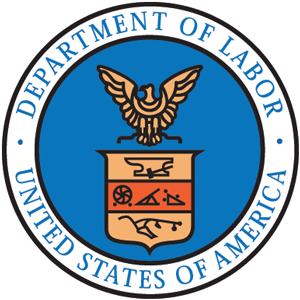DOL proposes rule to clarify PPE standard

|
The Department of Labor has announced a notice of proposed rulemaking to clarify the personal protective equipment standard for the construction industry.
The Occupational Safety and Health Administration’s general industry and maritime standards state PPE must fit each affected employee properly, but the current standard for construction does not. The proposed rule would clarify PPE must fit each employee properly to protect him or her from occupational hazards, aligning the language in OSHA’s PPE standard for construction with the agency’s general industry and maritime standards.
The failure of standard-sized PPE to protect physically smaller construction workers properly and issues with access to properly fitting PPE have long been concerns in the construction industry. The proposed rule clarifies the existing requirement; OSHA does not expect the change to increase employers’ costs or compliance burdens.
DOL expands submission requirements for injury, illness data in some industries

|
The Department of Labor has announced a final rule that will require certain employers in designated high-hazard industries including construction to electronically submit injury and illness information to the Occupational Safety and Health Administration. The rule takes effect Jan. 1, 2024.
The rule requires establishments with 100 or more employees in certain high-hazard industries to electronically submit information from their Form 300-Log of Work-Related Injuries and Illnesses and Form 301-Injury and Illness Incident Report to OSHA once per year. The submissions are in addition to submitting Form 300A-Summary of Work-Related Injuries and Illnesses. To improve data quality, establishments also are required to include their legal company name when making electronic submissions to OSHA.
OSHA will publish some of the data collected on its website, osha.gov, to allow employers, employees, potential employees, employee representatives, current and potential customers, researchers and the public to use information about a company’s workplace safety and health record to make informed decisions. OSHA says providing public access to the data will reduce occupational injuries and illnesses.
The final rule retains the current requirements for electronic submission of information from Form 300A from establishments with 20-249 employees in certain high-hazard industries and from establishments with 250 or more employees in industries that must routinely keep OSHA injury and illness records.
DOL announces update to Davis-Bacon Act prevailing wage rule
The Department of Labor has published a final rule updating the Davis-Bacon Act, which sets the prevailing wages contractors must pay workers on federal projects.
The rule restores DOL’s definition of prevailing wage to make it equivalent to the wage paid to at least 30% of workers—rather than 50% of workers—in a given trade in a locality. The rule also aims to raise the hourly earnings of workers for prime contractors and subcontractors on projects that receive federal funding through legislation such as the Infrastructure Investment and Jobs Act and the CHIPS Act.
The Davis-Bacon Act uses pay surveys administered by DOL to set the prevailing wage in a federally funded project’s location. There have been concerns the process can skew wage rates.
DOL said the new rule makes the process of updating prevailing wage rates easier by giving the department the authority to adopt prevailing wages determined by state and local governments; issue wage determinations for labor classifications where insufficient data was received through its wage survey process; and update outdated wage rates. The rule also adds an anti-retaliation provision in contract clauses and strengthens DOL’s ability to withhold money from a contractor to pay employees their lost wages.
Critics of the Davis-Bacon law opposed the rule, saying it will increase regulatory burdens on small businesses, new industries and public work projects, as well as increase the cost of construction, discourage competition and diminish the value of taxpayer investment in government infrastructure projects.
The final rule takes effect Oct. 23.



